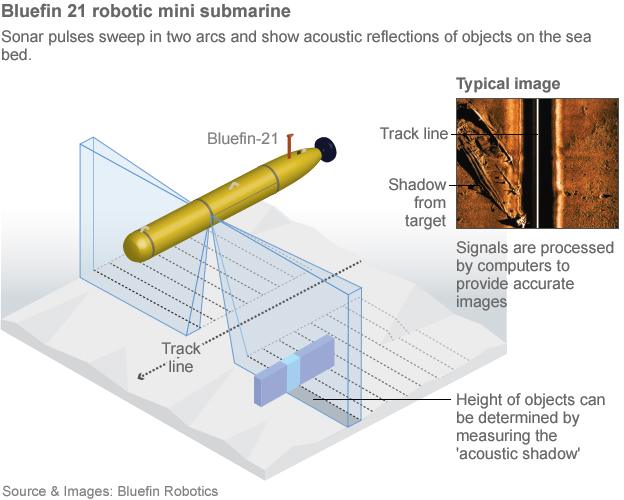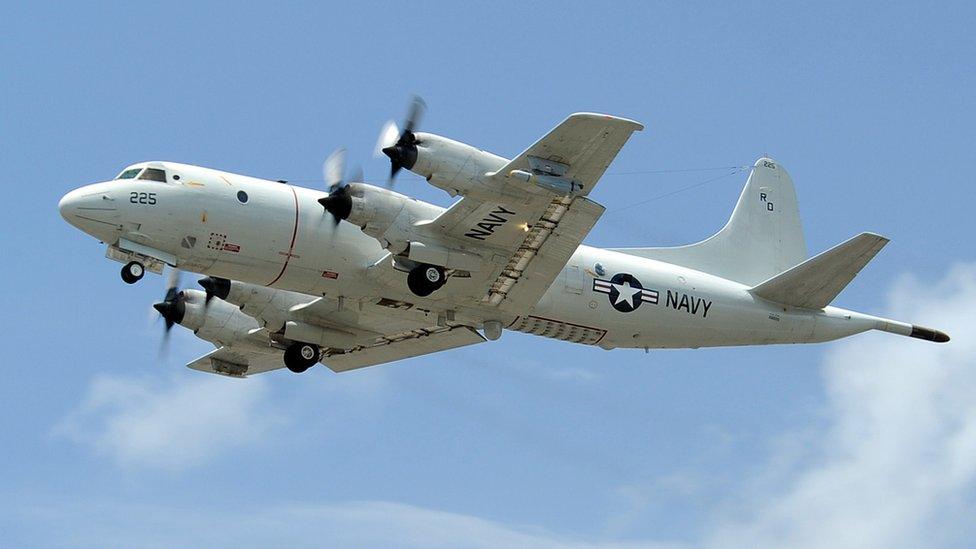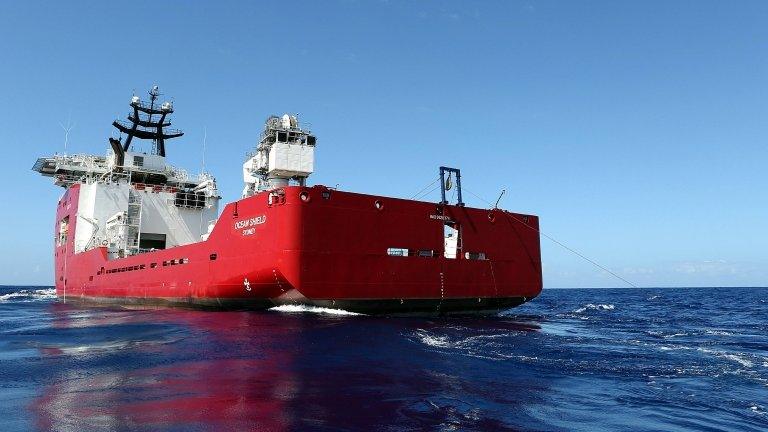Mini-sub starts search for MH370 wreckage
- Published
The detection of crackly ultrasonic "pings" from the depths of the ocean began to suggest the search for missing Malaysia Airlines Flight MH370 was finally reaching a conclusion.
Those signals, generated by the plane's "black box" flight recorders, now seem to have faded and search teams have turned to an "autonomous underwater vehicle", Bluefin-21, in the hope it may be able to track down some sign of the aircraft's wreckage.
Bluefin-21 was dropped into the water on Monday near an area of sea bed known as the Zenith Plateau, around 1,800 km north west of Perth, Australia.

Depths here range from 1,753m to 6,000m - dropping away sharply further north.
The process of tracking down wreckage is likely to be slow and painstaking.
Bluefin-21 takes six times longer than a towed pinger locator - used to detect the black box signals - to cover a similar area, and the two devices cannot be used at the same time.
The yellow, torpedo-shaped, sub may also have to operate at depths close to its 4,500m (14,763ft) maximum, under pressure equivalent to around 446kg on a single fingernail.
Bluefin-21 takes two hours to descend and then spends 16 hours scanning, travelling at its top speed of just over 8km/h.
Returning to the surface then takes a further two hours, while downloading the massive volume of data recorded will fill a further 16 hours.
The data will then allow search crews to construct a detailed 3D sonar map of the sea bed. If any wreckage is spotted, the sub can also be fitted with a camera to take photographs.
The initial search area - roughly in the region where "pings" were detected by Australia's naval support ship Ocean Shield on 6 April - covers some 40 sq km (15 sq miles).

The BBC's science correspondent Jonathan Amos points out that the topography of the ocean floor in the region is unusually rugged, making the operation extremely challenging.
Oceanographer Peter Burkill from Plymouth University said the detailed nature of the sea bed could also be an important factor.
"If its rocky, then it's a question of what the micro-topography is like - is it flat, is it rocky, are there lots of surface crenations [scalloped-edged formations]?"
The ocean floor in the search zone had not been extensively surveyed, Professor Burkill said, mainly due to an absence of commercial interest in the remote region.
Mapping the sea bed
Current maps of the area's sea bed are mostly based on satellite surveys, and more detailed models are being assembled by the Commonwealth Scientific Industrial Research Organisation (CSIRO).
"Satellites are continuously monitoring the ocean, the principal ones for this investigation are European and US sea-level measuring satellites," said the organisation's oceanographer David Griffin.
"We're also using thermal imagery of the ocean to see the details of what the flow (current) has been."
He explained that if the location of the detected signals had correctly identified the crash site, multi-directional ocean currents could explain why no wreckage has yet been found.
"It's right at a position where the current is flowing in one direction just south of that position, and in the other direction just north of that," he said.
If debris is lying in depths beyond the range of Bluefin-21, search teams will turn to more specialised equipment.
This could include Remus and Remora-type unmanned mini-subs, used in the search for Air France flight 447 in 2011, which can operate at depths of up to 6,000 metres.
.jpg)
Bluefin-21 can dive to more than 4,000 metre depths
- Published5 September 2014

- Published6 April 2014

- Published7 April 2014
